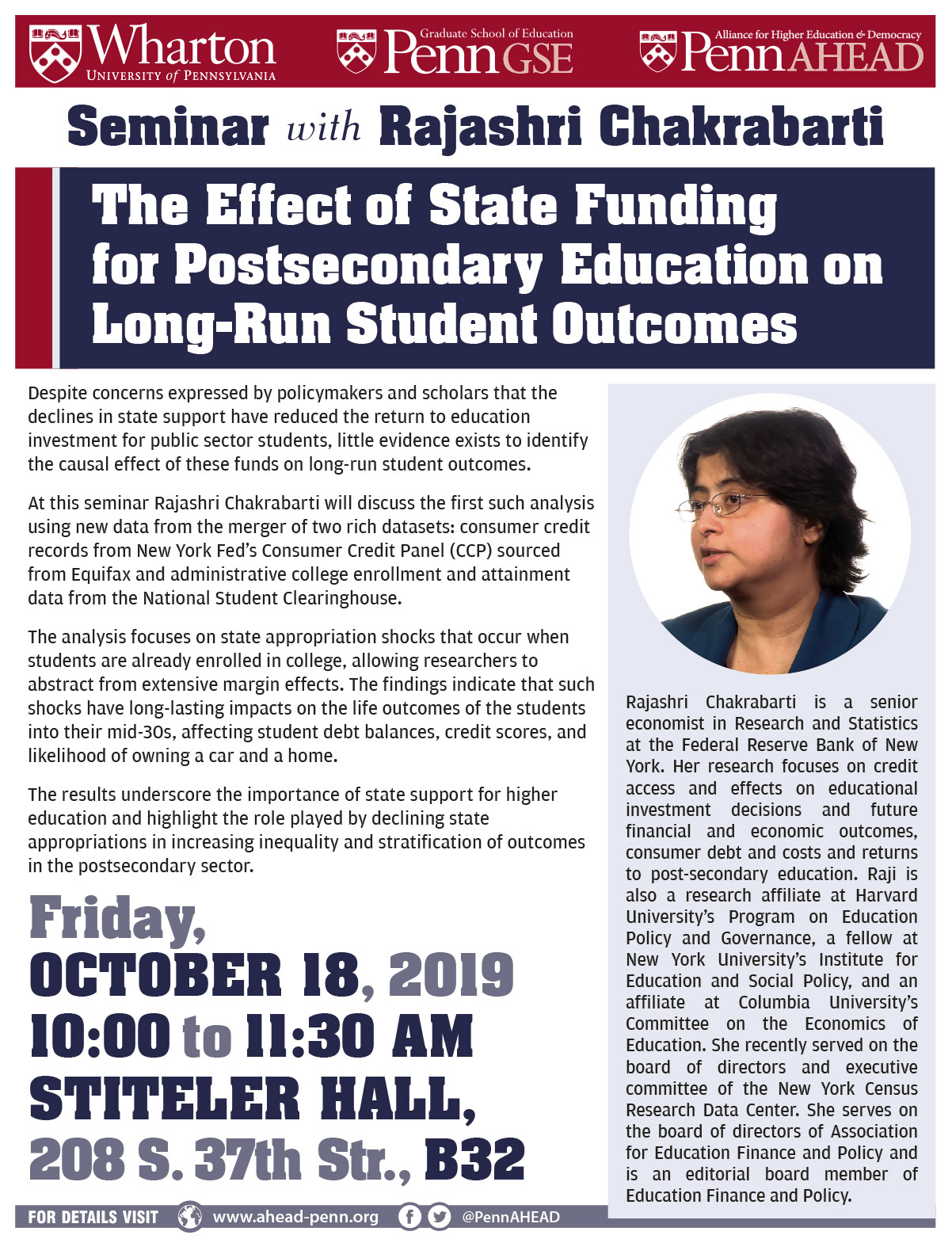Questioning the Calculations |
College Promise Programs | Donate! 


The Effect of State Funding for Postsecondary Education on Long-Run Student Outcomes
SYNOPSIS:
Most public colleges and universities rely heavily on state financial support for operation. As state budgets have tightened over the past several decades, appropriations for higher education have declined substantially.
Despite concerns expressed by policymakers and scholars that the declines in state support have reduced the return to education investment for public sector students, little evidence exists that can identify the causal effect of these funds on long-run student outcomes. The seminar presents the first such analysis in the literature using new data that leverages the merger of two rich datasets: consumer credit records from New York Fed's Consumer Credit Panel (CCP) sourced from Equifax and administrative college enrollment and attainment data from the National Student Clearinghouse.
The authors overcome identification concerns related to the endogeneity of state appropriation variation using an instrument that interacts the baseline share of total revenue that comes from state appropriations at each public institution with yearly variation in state-level appropriations per college-age resident. This "shift-share'' instrument exploits the fact that a statewide change in appropriations for higher education will have larger effects on institutions that are more reliant on state funds. The authors focus on state appropriation shocks that occur when students are already enrolled in college, which allows them to abstract from extensive margin effects. They examine the effect of state appropriations among 25-30 year olds and 30-35 year olds, separately by whether students initially enrolled in a four-year or two-year institution.
The findings indicate that state appropriation shocks students experience in college have long-lasting impacts on their life outcomes into their mid-30s. Among students whose first college is a four-year institution, state appropriation increases during college lead to a lower probability of having any student loan debt, lower student debt balances, higher credit scores, and increased likelihood of owning a car and a home. For two-year students, state appropriations increases lead to higher credit scores, an increased likelihood of owning a car and a home, and higher auto and home mortgage loan balances. These results underscore the importance of state support for higher education in driving the returns students experience to investing in college and highlight the role played by declining state appropriations in increasing inequality and stratification of outcomes in the postsecondary sector.
ABOUT THE PRESENTER:
Rajashri Chakrabarti is a senior economist in Research and Statistics at the Federal Reserve Bank of New York. Her areas of interest include labor economics, consumer finance and economics of education. Her research focuses on credit access and effects on educational investment decisions and future financial and economic outcomes, consumer debt and costs and returns to post-secondary education. Raji is also a research affiliate at Harvard University’s Program on Education Policy and Governance, a fellow at New York University’s Institute for Education and Social Policy, and an affiliate at Columbia University’s Committee on the Economics of Education. She recently served on the board of directors and executive committee of the New York Census Research Data Center. She serves on the board of directors of Association for Education Finance and Policy and is an editorial board member of Education Finance and Policy. Prior to joining the NY Fed, Raji was a postdoctoral fellow at Harvard University in the John F. Kennedy School of Government's Program on Education Policy and Governance. She holds a Ph.D. in Economics from Cornell University.



